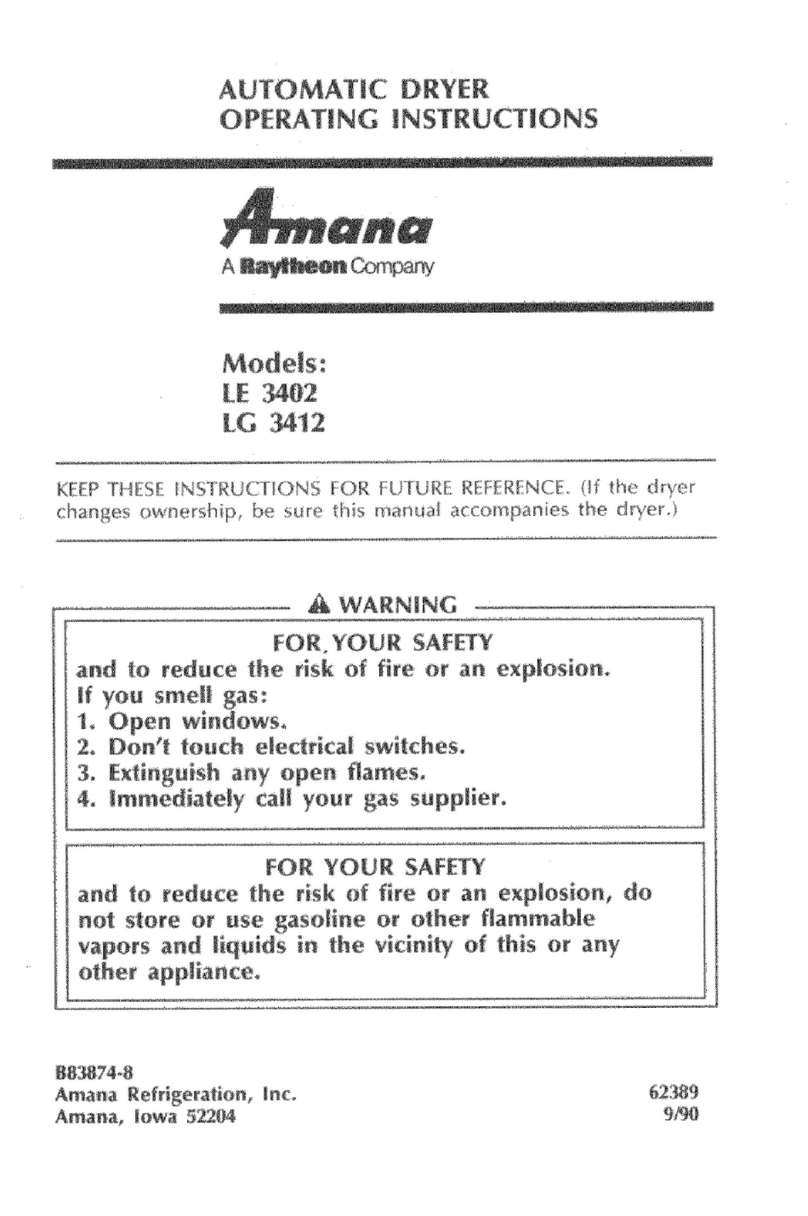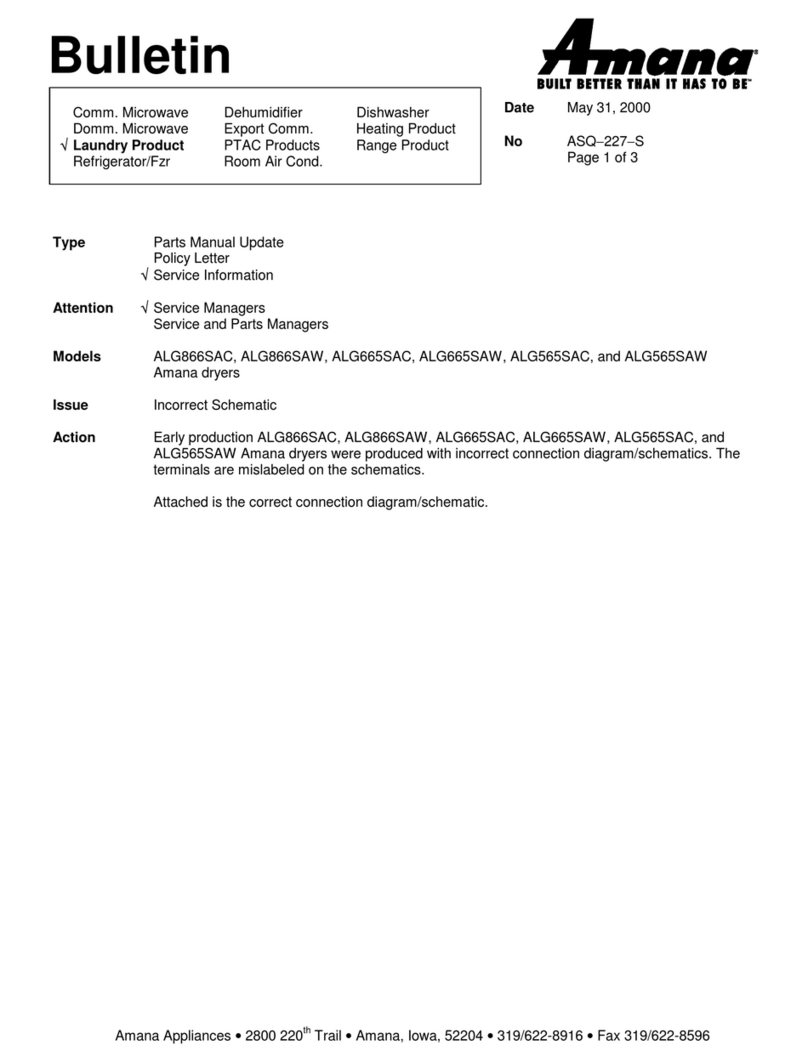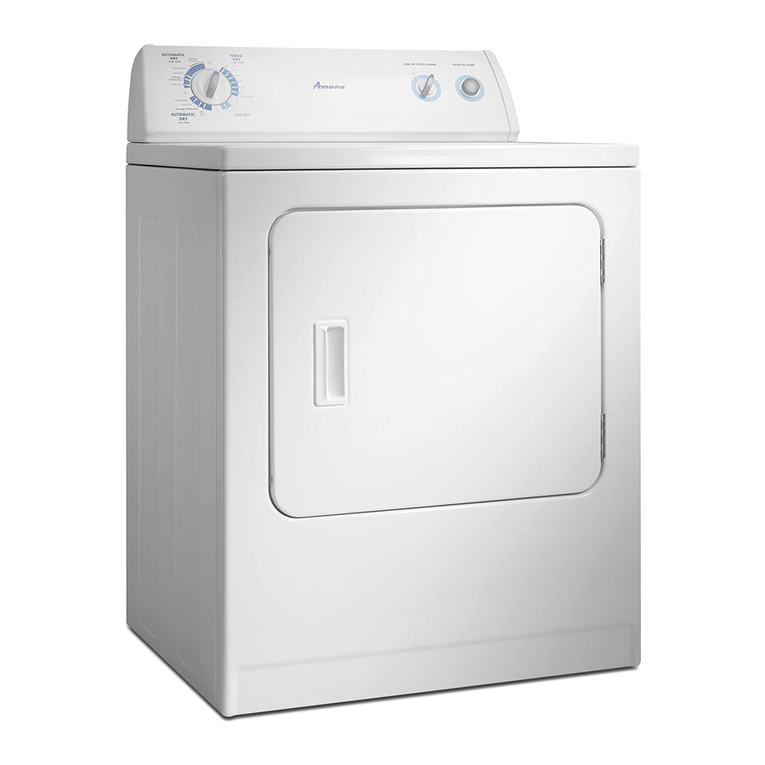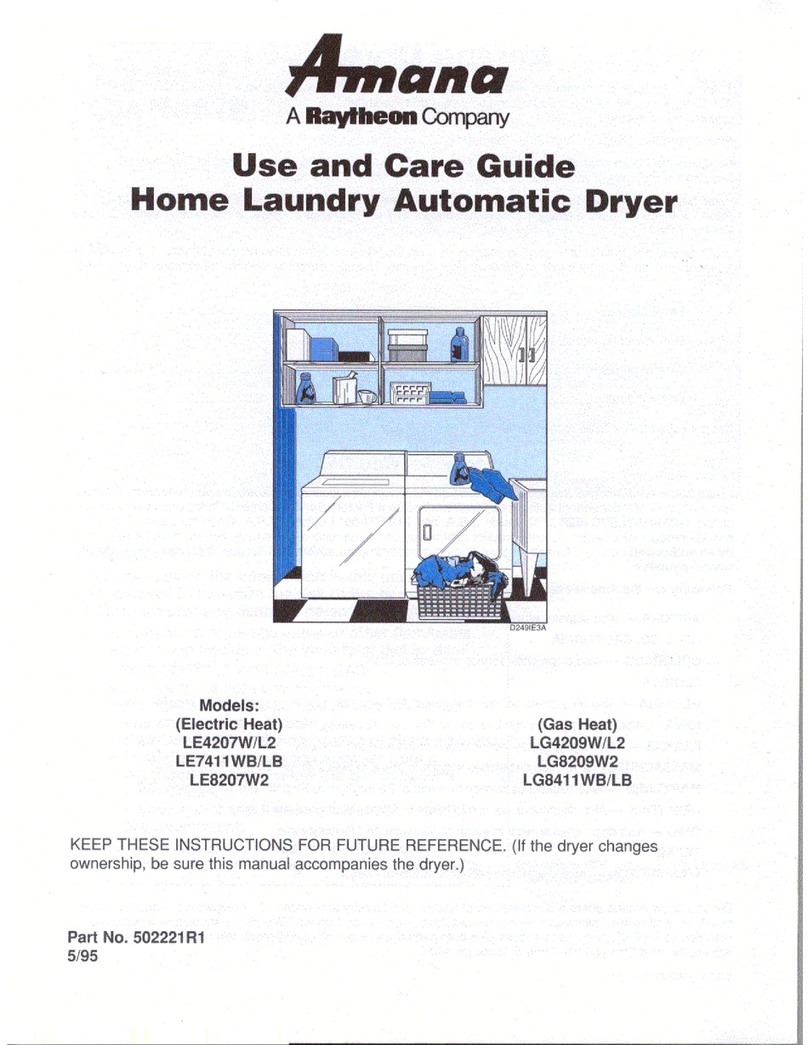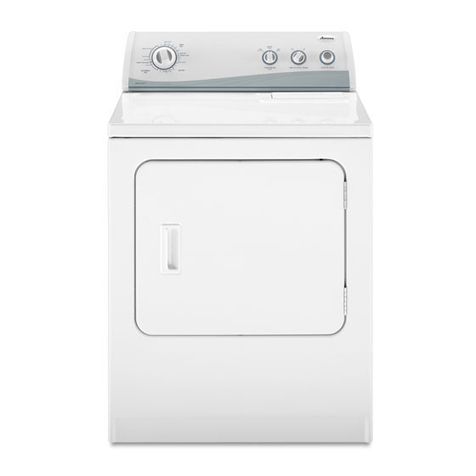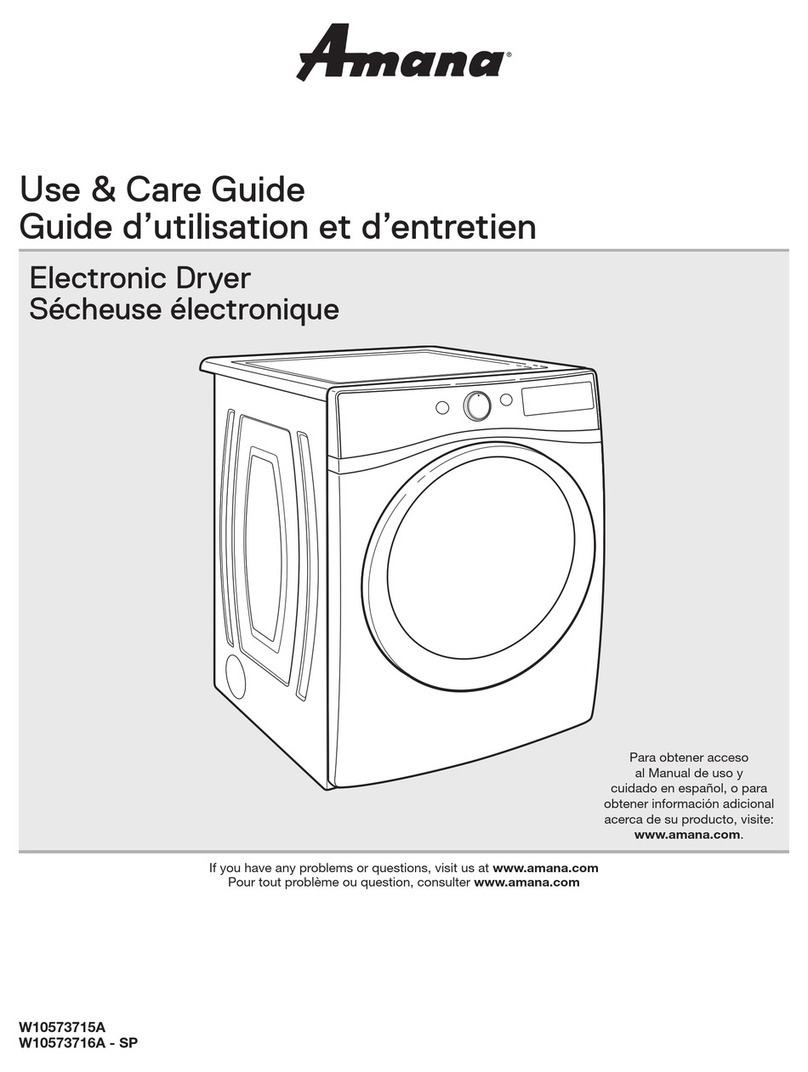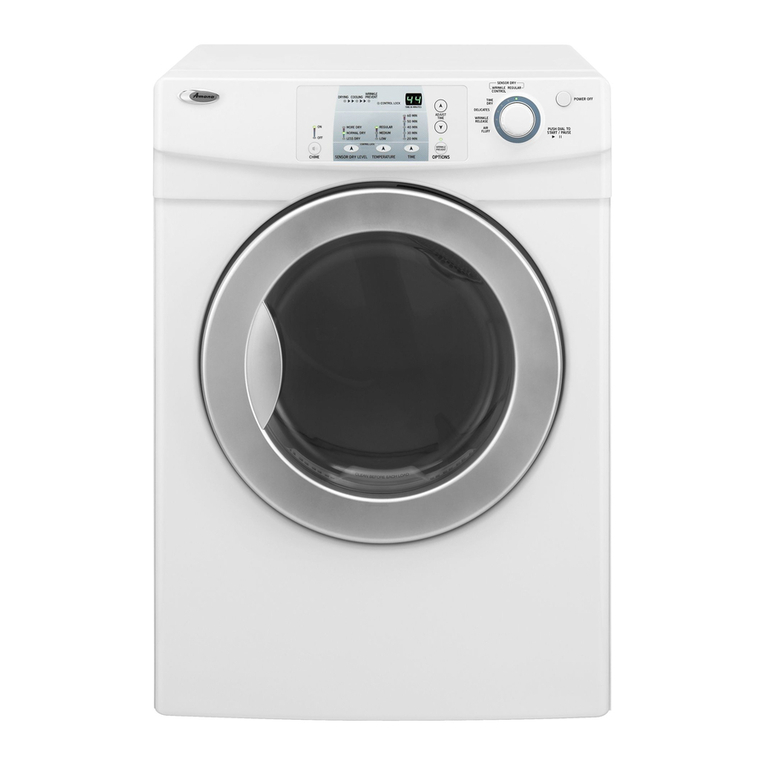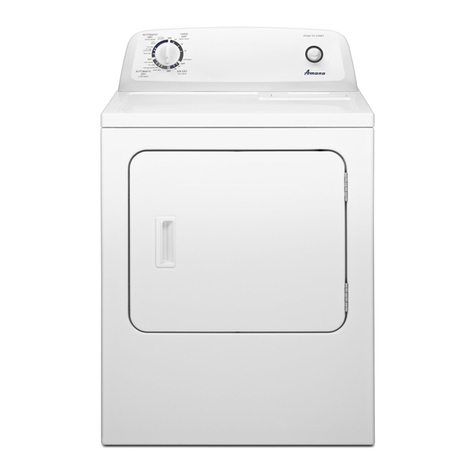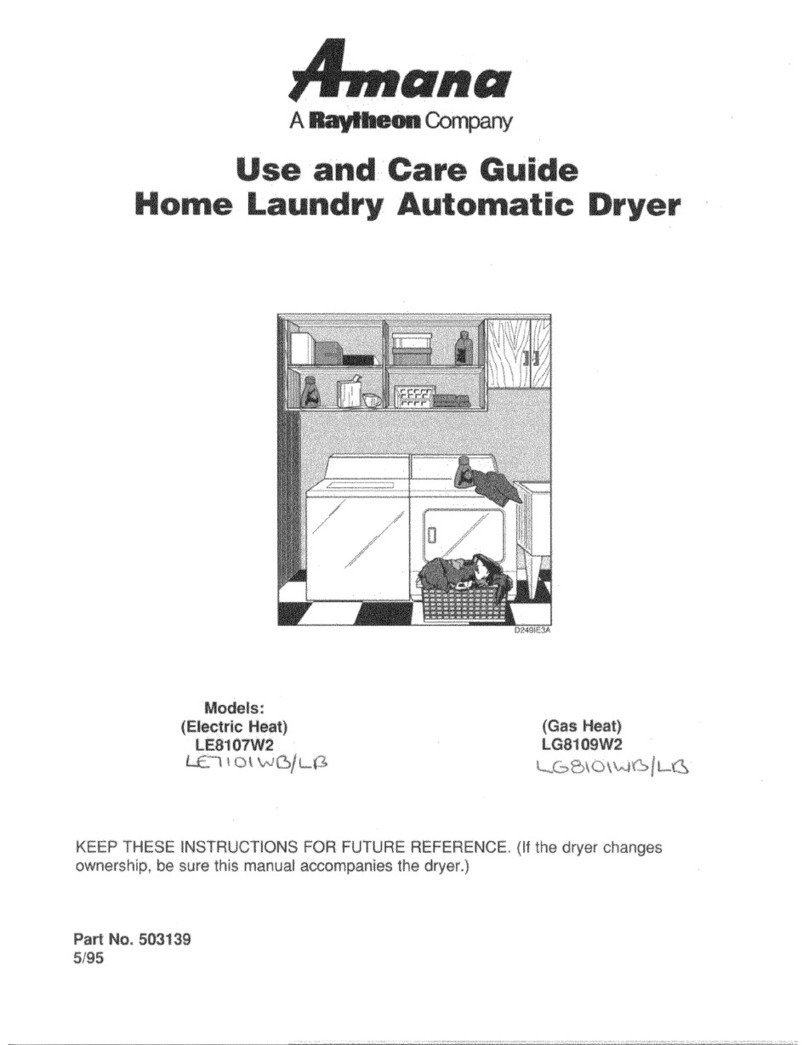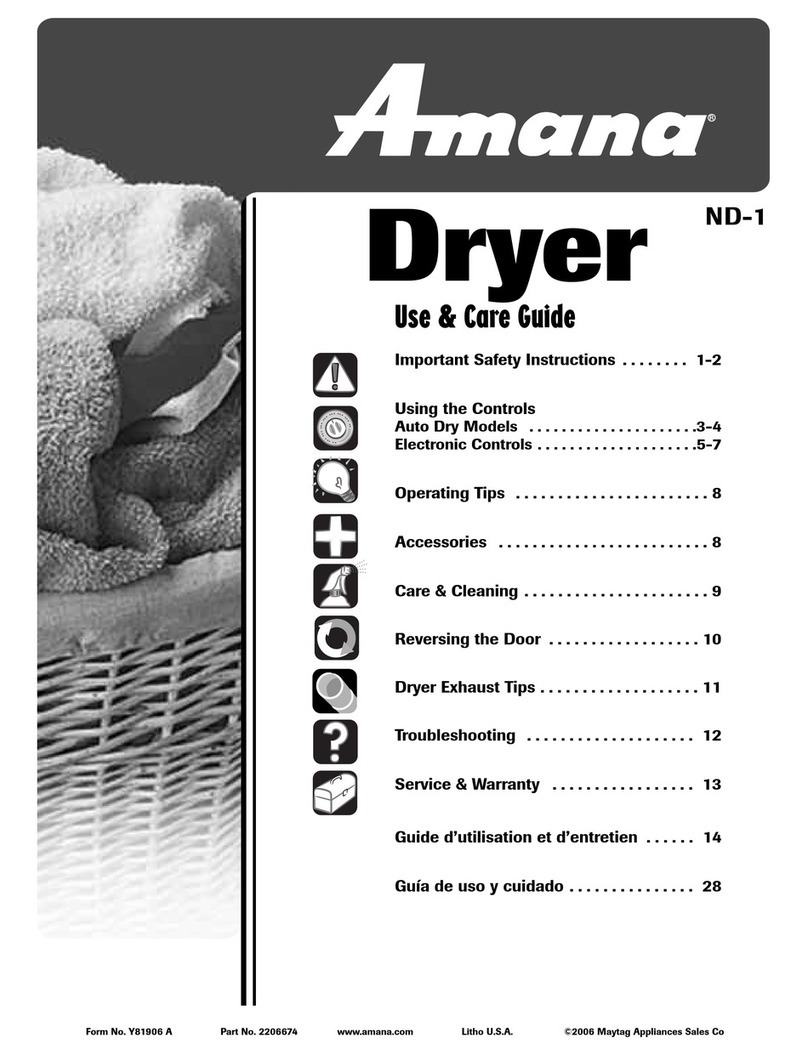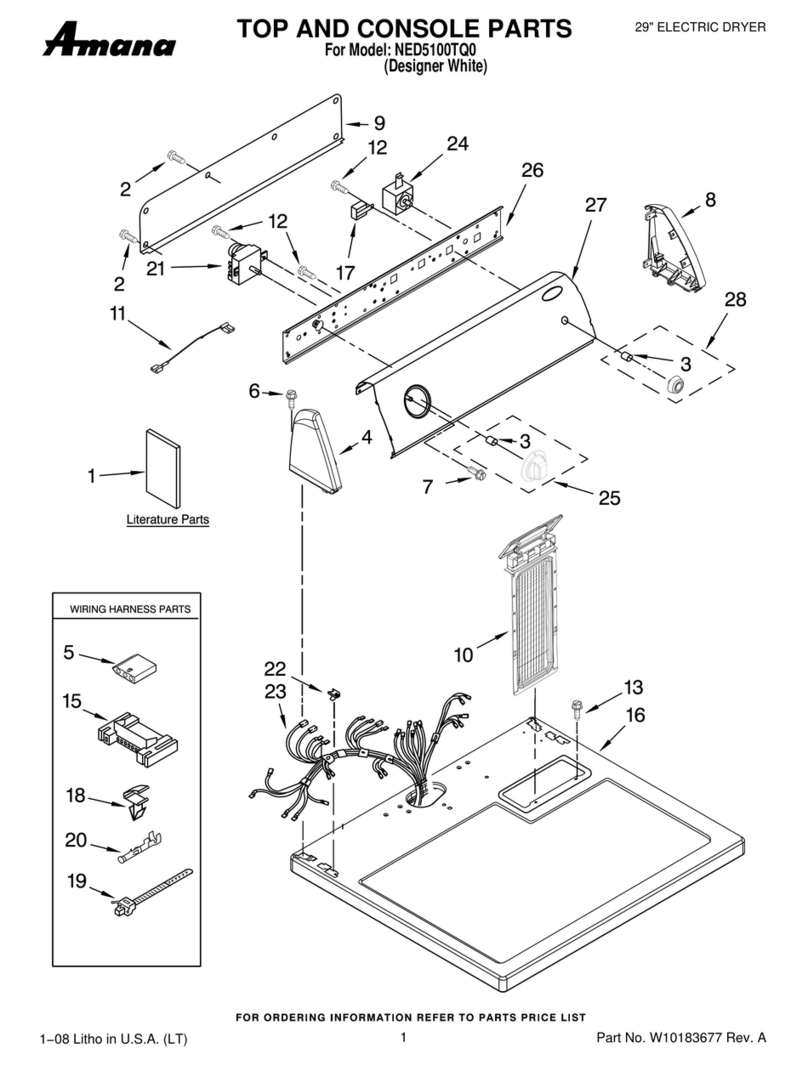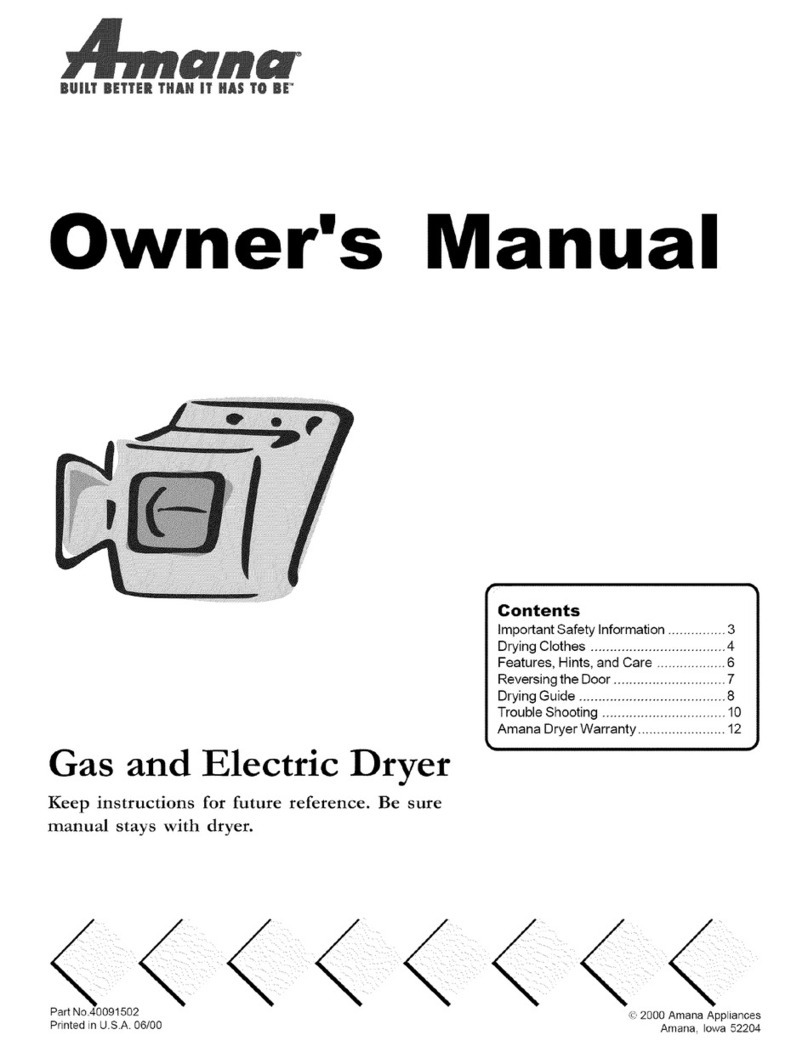
5
Optional Pedestal
Are you placing the dryer on a pedestal? You have the option of
purchasing pedestals of different heights separately for this dryer.
You may select a 10" (254 mm) pedestal or a 15.5" (394 mm)
pedestal with a storage drawer. The pedestal will add to the total
height of the dryer for a total height of approximately
46" (1168 mm) or 51.5" (1308 mm), respectively.
For a garage installation, you will need to place the 10" (254 mm)
pedestal at least 9" (229 mm) above the floor. You will need to
place the 15.5" (394 mm) pedestal at least 3" (76 mm) above the
floor.
Optional pedestal (15.5" [394 mm] model shown)
To order, call the dealer from whom you purchased your dryer or
refer to the “Assistance or Service” section.
Pedestal Height Color Part Number
10"(254 mm) White WHP1000SQ
15.5"(394 mm) White XHP1550VW
15.5"(394 mm) Burgundy XHP1550VM
Location Requirements
You will need
■A location that allows for proper exhaust installation. A gas
dryer must be exhausted to the outdoors. See “Venting
Requirements.”
■A grounded electrical outlet located within 2 ft (610 mm) of
either side of the dryer. See “Electrical Requirements.”
■A sturdy floor to support the total dryer weight of 200 lbs
(90.7 kg). The combined weight of a companion appliance
should also be considered.
■A level floor with a maximum slope of 1" (25 mm) under entire
dryer. (If slope is greater than 1" [25 mm], install Extended
Dryer Feet Kit, Part No. 279810.) Clothes may not tumble
properly and automatic sensor cycles may not operate
correctly if dryer is not level.
■For a garage installation, you will need to place the dryer
at least 18" (460 mm) above the floor. If using a pedestal, you
will need 18" (460 mm) to the bottom of the dryer.
Do not operate your dryer at temperatures below 45ºF (7ºC).
At lower temperatures, the dryer might not shut off at the end of
an automatic cycle. Drying times can be extended.
The dryer must not be installed or stored in an area where it will
be exposed to water and/or weather.
Check code requirements. Some codes limit, or do not permit,
installation of the dryer in garages, closets, mobile homes, or
sleeping quarters. Contact your local building inspector.
NOTE: No other fuel-burning appliance can be installed in the
same closet as a dryer.
Installation clearances
The location must be large enough to allow the dryer door to
open fully.
Dryer Dimensions
38"
(965.2 mm)
*31½"
(800.1 mm) 27"
(686 mm)
50½"
(1282.7 mm)
*Most installations require a minimum 5" (127 mm) clearance
behind the dryer for the exhaust vent with elbow. See “Venting
Requirements.”
Installation spacing for recessedarea or closet installation
The following spacing dimensions are recommended for this
dryer. This dryer has been tested for spacing of 0" (0 mm)
clearance on the sides and rear. Recommended spacing should
be considered for the following reasons:
■Additional spacing should be considered for ease of
installation and servicing.
■Additional clearances might be required for wall, door, and
floor moldings.
■Additional spacing should be considered on all sides of the
dryer to reduce noise transfer.
■For closet installation, with a door, minimum ventilation
openings in the top and bottom of the door are required.
Louvered doors with equivalent ventilation openings are
acceptable.
■Companion appliance spacing should also be considered.
Custom undercounter installation - Dryer only
0"
(0 mm)
38" min.
(965.2 mm)
1"*
(25 mm)
1"*
(25 mm)
27"
(686 mm)
*Required spacing


